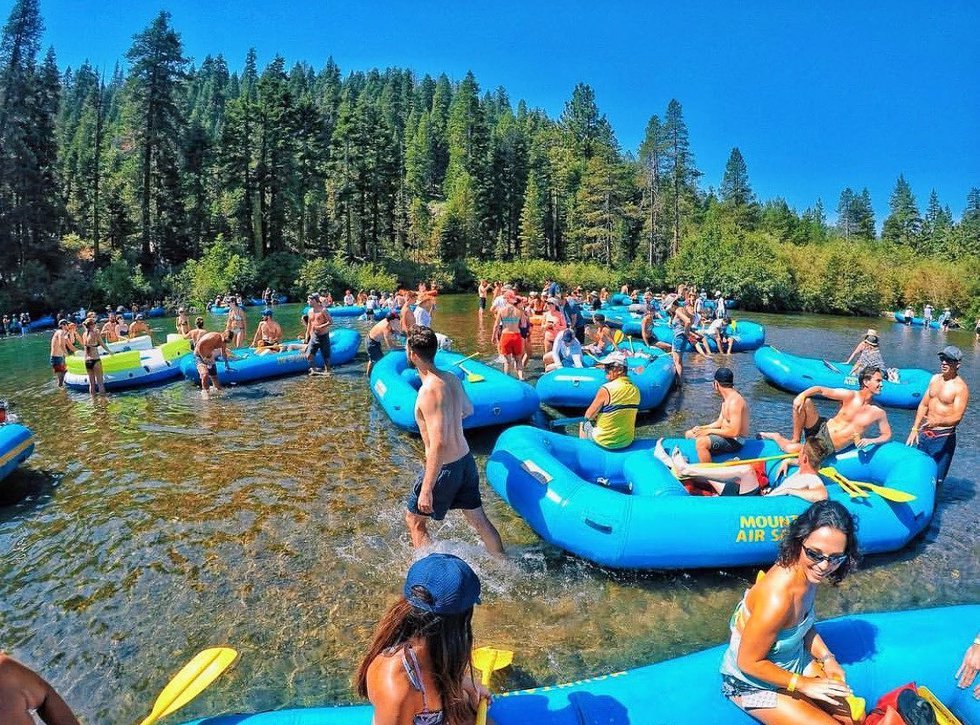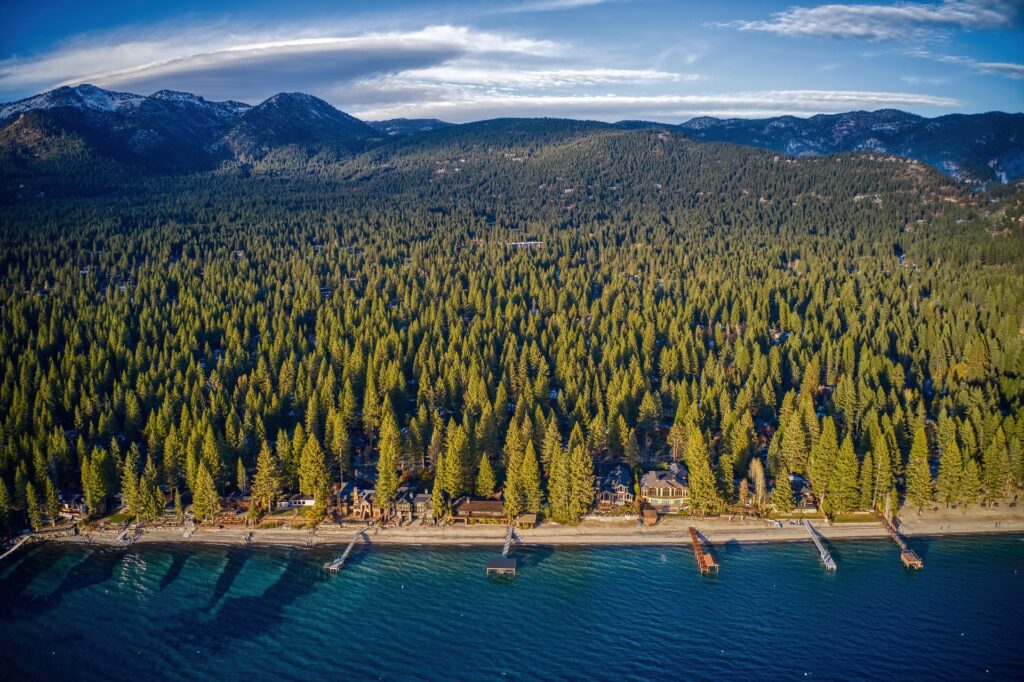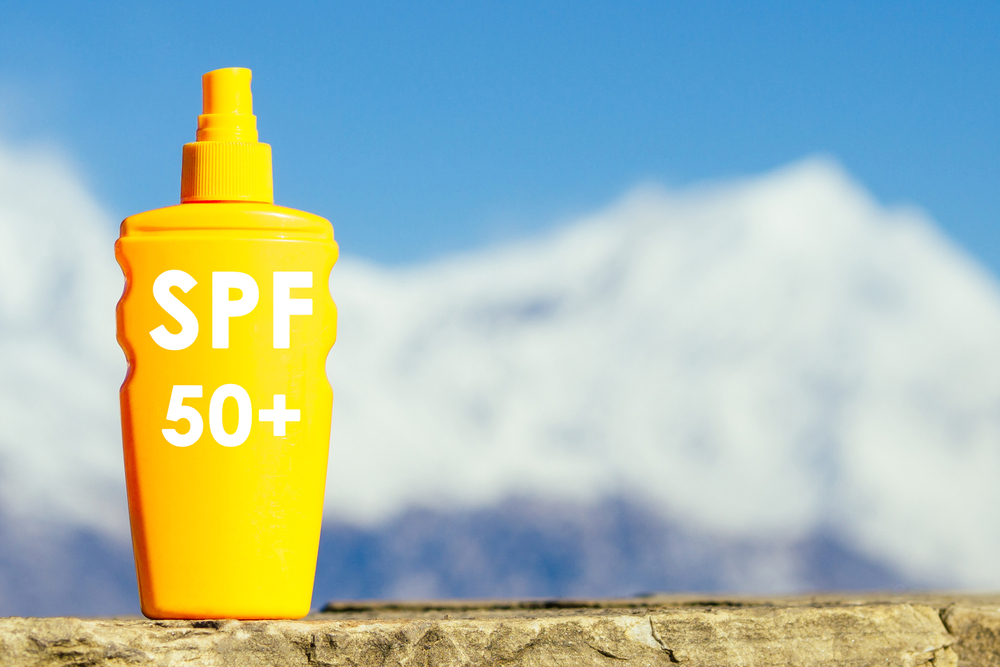Here’s why…
As most have heard by now, the two rafting companies that offer the popular rafting trip between Tahoe City and River Ranch will most likely not be able to open their operations this summer. After one of the biggest winters to hit the Sierra Nevada on record, why and how could that be? Because there is not enough water in the river to safely float to River Ranch. What? While that might sound counterintuitive, it’s all wrapped up in the complicated agreements that have for many decades regulated how much water flows in the Truckee River.
The Truckee River Operating Agreement states that there are just three reasons to release water from Lake Tahoe:
- To maintain minimum in-stream flow: Which is enough water to keep the fish and the rest of the organisms who depend on the river healthy. Usually this is about 70 cfs (cubic feet per second)
- To maintain Floriston rates: This refers to the amount of water passing by the gauge on the Truckee River near Floriston. The magic number is 500 cfs. If the flow is less than this, water can be released from Tahoe or other reservoirs (Boca, Prosser Creek) to bring it up to 500. All spring, over 2,000 cfs has been flowing by Floriston, and sometimes over 3,000 cfs.
- And finally, water can be released from Tahoe to keep the lake from reaching its upper legal limit of 6,229.1 feet. As of June 29, the level was at just above 6,228 feet. The lake level is continuing to rise, but more slowly than earlier in the spring.
To sum it up: If there is plenty of water going [naurally] by Floriston [the water gauge], no more water needs to be let out of Tahoe than the 70 cfs range until it appears that Tahoe will reach its legal limit. While the interests of Lake Tahoe and Truckee River users are taken into account in the river operating agreement, there are a lot of other entities that have interests in Truckee River water, including the over 400,000 people in the Reno area and the Washoe Tribe, which controls Pyramid Lake, the terminus of the Truckee River.
The first stream of any size to come into the Truckee below the dam is Bear Creek at Alpine Meadows, situated below the takeout spot for Tahoe City to River Ranch rafting.
Truckee River Rafting co-owner Richard Courcier says he has been told that “they think they will be able to keep the lake barely below the legal limit and won’t need to let more water out than the current releases.” It will, however, Courcier says, be pretty close. How quickly the snow melts, how much evaporation occurs, and whether we get much more rain will all be factors.
While the agreement says water needs to be released from Tahoe to prevent topping the legal limit, it doesn’t say how quickly it has to be let out. When parts of Tahoe flooded around New Year 1997 after 10 feet of snow was followed by 22 inches of rain (at what was then known as Squaw Valley), all the gates were opened at once, letting out over 2,500 cfs. Fifteen miles away in Truckee over 12,500 cfs was recorded, on its way to one of the largest floods ever to hit the Sierra and Nevada.
Courcier still hopes that by mid-August there might be a need to open the gates enough to operate, but the thought at this point is that at Floriston “it will be roaring for a while, and won’t drop below 500 cfs and if it does, they may release from Boca and Prosser first.” Those reservoirs are filled quite high and don’t have the capacity to handle as much inflow as Tahoe.
The rafting company permits include a provision that while operating they clean up the litter that rafters drop into the river and provide portable restrooms for both their paying customers and all the private rafters out floating.
The concern is that while the rafting companies are not open, some individuals still may try to float down the slow-moving river, even though rocky conditions could cause safety, sanitary, and garbage issues. “We will get knuckleheads who will try to do it and will just abandon their rafts. It will take so many hours to get to River Ranch it’s not worth it,” Courcier said, who also owns Mountain Air Sports.
While Tahoe City Public Utility District Parks and Recreation Director Valli Murnane agrees that floating down the Truckee with not much water flowing is not advised, they will have portable restrooms and trash cans placed for bike-trail users that are also available for anyone coming from the river. “We don’t have the ability to shut the river down, we hope individuals make responsible decisions. We don’t want people leaving behind their rafts. It is our hope they will take them home,” Murnane said.
While the lack of water just downstream of Tahoe is bad news for those who like the gentle raft to River Ranch, the heavy runoff year is a boon for those who operate the more thrilling white water rafting operations further downstream between Boca and Reno. Tahoe Whitewater Tours owner, Mike Miltner, said that he expects to be guiding trips there all summer.
As to the well-loved floating section just outside of Tahoe City, Courcier still holds out some hope. “Going into the last winter with Lake Tahoe below the rim, if we had a dry winter [this year] we would have been screwed for years. Instead, the lake rose 6 feet this winter. Now we know it will take three dry winters to drop below the rim.” So even if this year is a bust, the next few years should provide the right amount of water for successful rafting seasons. Of course, there is also the possibility of another mega winter, which, given the fact that the lake would be full, would ironically lead to more water being released than the rafters can handle. If you are in the rafting business, you truly need to go with the flow.
Content creator: Tahoe Expert Tim Hauserman



